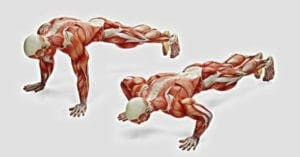Tips on Maintaining An Active and Healthy Lifestyle:
An active lifestyle is something that we all should implement into our daily lives. After some time of wreaking havoc on the body, a recovering addict, who begins to incorporate healthy planning will begin to see how much more fulfilling life is when the body and mind are wholesomely nourished.
If you are a recovering addict, here are some ways to step up your newfound freedom through the joy of physical fitness and nutrition, a long-lasting combination that can lead to a happier, more fulfilling future.
The Benefits of Exercise
Exercise is like medicine. It improves self-confidence, reduces stress and anxiety, encourages motivation, prevents cognitive decline, and helps to control addiction.
According to The Centers for Disease Control and Prevention, only about 1 in 5 adults meet the recommended amount of daily exercise. For a recovering addict, physical fitness plays an important role because it encourages mental and physical stamina as well as a fresh outlook.
Because movement is a natural happiness booster, physical actually allows your brain to release its own set of chemicals in the form of dopamine and serotonin. These two substances assist in keeping you motivated and excited to try new things, producing a natural high that is greatly beneficial for your brain.
Find the Right Workout
Breaking a sweat is always a good idea, but isn’t always necessary, depending on your environment, age, sex, and location, according to Healthguidance.org. However, sweating is good for you, as it releases toxins, helps guard you against harmful germs and repair wounds more quickly.
You don’t necessarily have to be an avid athlete to enjoy the benefits of fitness. Walking, bike riding, playing ball with your dog, or even doing chores can help get your blood pumping. Your personality and biology also play an important role in how you prefer to move. According to Weight Watcher’s chief scientist, Karen Miller-Kovach, men and women approach exercise differently. While women may take smaller steps and incorporate healthy eating into their plan, Men are likely to take bigger strides to reach their goal.
You may also prefer to work out alone or within the company of others. While some prefer team sports, others like one-on-one such as tennis or golf. Your fitness preference should fit your personality so that you will gain more enjoyment and stick to it. Don’t be afraid to try out different things until you find the right fit, whether it be at the gym, a park or in the privacy of your home.
Stay Active, Eat Healthily
Diet and exercise are crucial components for addiction recovery and anger management as well. A healthy diet helps reduce cravings and repair damage to internal and external organs. There are loads of health information available to help you get started. As a guideline, always get the recommended amount of hydration, by drinking lots of water, which will help replenish and detoxify the body.
Always choose a diet that is low in sugar and saturated fats, both of which can cause inflammation. A diet high in omega 3’s can be found in fish and nuts, while fiber can be found in fruits, vegetables and grains. Additionally, always load up on leafy greens as they high in antioxidants, which fight free radicals and helps prevent cancer.
A healthy lifestyle is all about making the right choices that will have long-lasting positive advantages while incorporating fun. As a recovering addict, choose activities which nourish the body and soul. Stay positive and before you know it, life will open up new possibilities.




